Spiderweb donuts are more than just a treat; they’re a playful dance with dough and sugar. I stumbled into this recipe after a messy baking session led to some leftover dough and a craving for something visually fun. The web shape makes them feel like tiny edible art pieces, perfect for when you want to impress without too much fuss. Plus, the process is surprisingly forgiving, which is a relief when you’re juggling a busy kitchen.
Why I Keep Coming Back to These Donuts
They’re imperfect but beautiful, messy but satisfying. The web pattern sparks childhood memories of sticky spider webs in the garden, now transformed into something sweet and edible. Making them is a chance to slow down, focus, and enjoy the tactile pleasure of piping delicate threads. Plus, they’re a conversation starter, a treat that invites admiration and a little bit of chaos in the kitchen.
The Building Blocks of Spiderweb Donuts
- Flour: All-purpose flour gives the dough structure and a neutral base. Swap with gluten-free flour if needed.
- Yeast: Activates the dough, making it airy. Fresh yeast gives a more robust rise than dry, but dry works fine.
- Sugar: Adds sweetness and helps the dough brown. Honey can replace sugar for a richer flavor.
- Milk: Keeps the dough moist and tender. Almond milk makes it dairy-free.
- Vegetable oil: Frying fat that makes the donuts crispy. Coconut oil adds a subtle aroma.
- Vanilla extract: Adds warmth and depth. Use almond or lemon extract for a different twist.
- Powdered sugar & cocoa powder (for decoration): Optional toppings to enhance the web effect and flavor.
Tools of the Trade for Spiderweb Donuts
- Mixing bowls: Combine ingredients without fuss.
- Deep-fryer or heavy-bottomed pot: Maintain steady oil temperature for frying.
- Piping bag with fine round tip: Create delicate web patterns.
- Cooling rack: Drain excess oil and cool quickly.
- Kitchen thermometer: Monitor oil temperature precisely.
Crafting the Perfect Spiderweb Doughnuts: A Step-by-Step Guide
Step 1: Mix the dough ingredients in a big bowl until just combined. Cover and let rest for 30 minutes.
Cooking Checkpoints & Tips to Keep You on Track
- Dough should be soft but not sticky, like slightly tacky cookie dough.
- Frying oil must be around 180°C (356°F) for crisp, golden donuts.
- Web design should be visible but not stiff—keep the dough flexible.
- Listen for a consistent crackling sound when frying for even cooking.
Common Mistakes & How to Fix Them
- Oil too hot, donuts burn quickly.? Use a thermometer to keep oil at 180°C (356°F); avoid overheating.
- Dough is sticky and hard to pipe.? Chill the dough if it’s too sticky to handle easily.
- Web pattern breaks or looks uneven.? Ensure web piping is gentle and steady to prevent tearing.
- Donuts are greasy or unevenly cooked.? Don’t overcrowd the pan; fry in batches for even cooking.
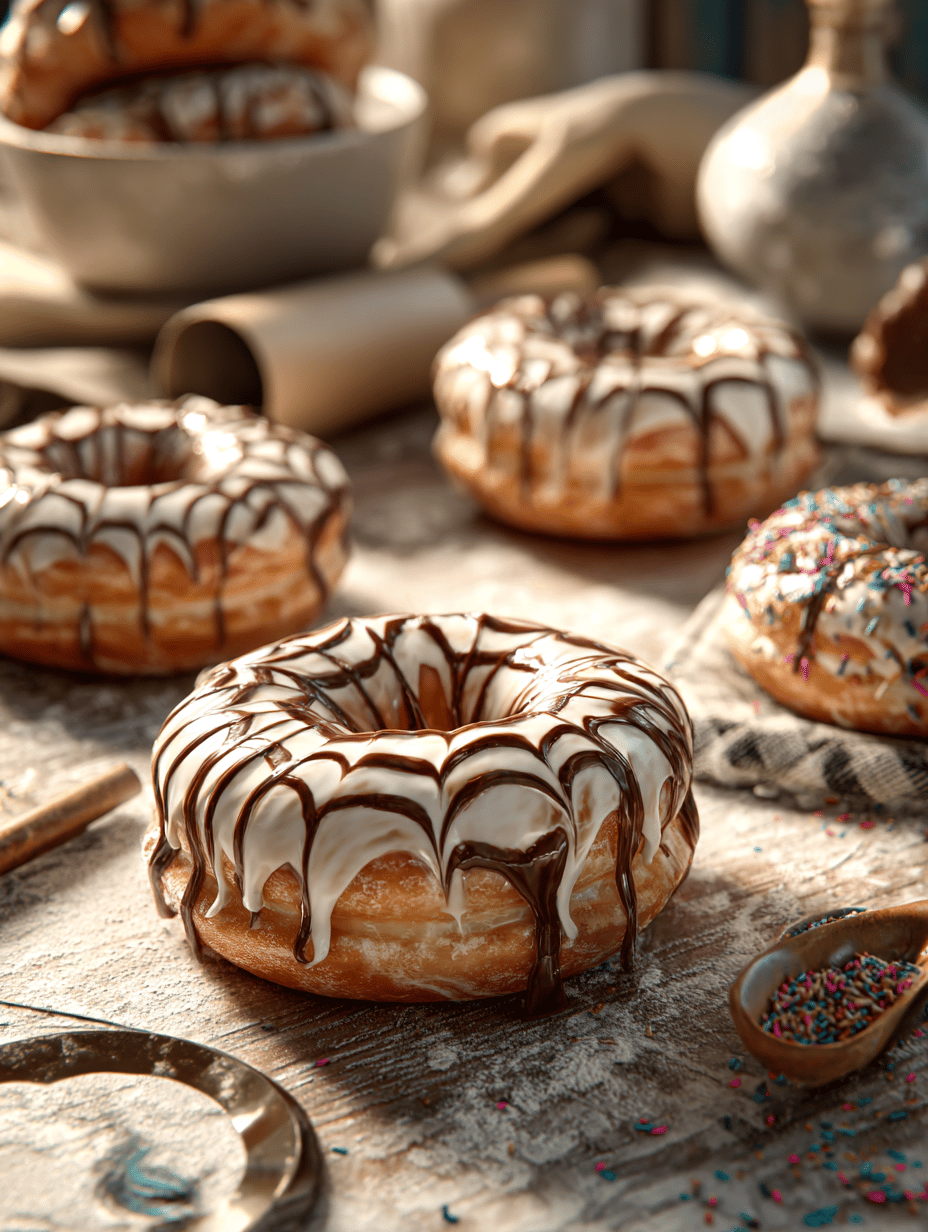
Spiderweb Donuts
Ingredients
Equipment
Method
- In a small bowl, sprinkle the yeast over warm milk and let it sit for 5 minutes until bubbly, signaling active fermentation.
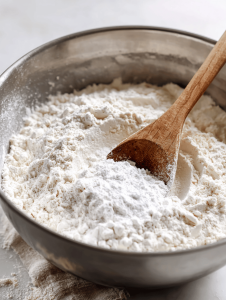
- In a large mixing bowl, combine flour, sugar, and a pinch of salt. Add the activated yeast mixture, egg, vanilla extract, and vegetable oil.
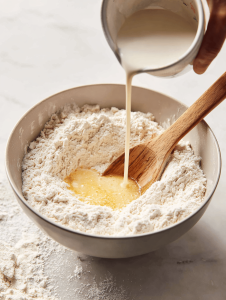
- Mix everything together until a soft, slightly tacky dough forms. Knead gently for about 5 minutes until smooth and elastic.
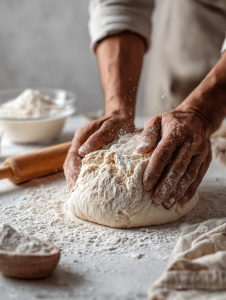
- Cover the bowl with a damp cloth and let the dough rise in a warm spot for about 30 minutes, or until doubled in size.
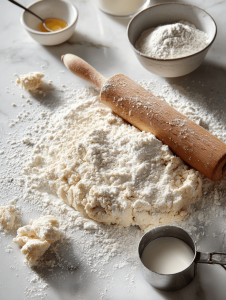
- Once risen, punch down the dough and roll it out on a floured surface to about 1/2 inch thickness. Use a round cutter to cut out donut shapes.
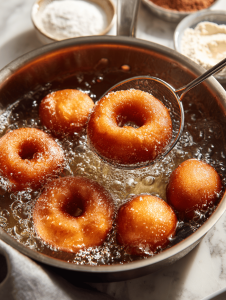
- Heat vegetable oil in a deep-fryer or heavy-bottomed pot to 180°C (356°F). Carefully fry the donuts in batches until golden brown, about 2-3 minutes per side.
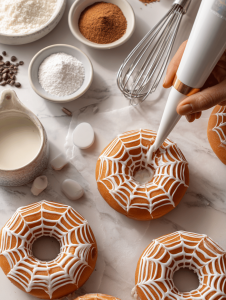
- Remove the donuts with a slotted spoon and drain on a cooling rack. Repeat until all donuts are fried and cooled slightly.
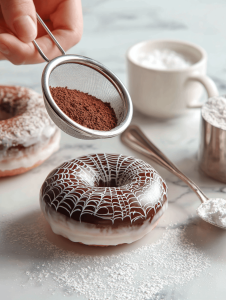
- Prepare the web piping sugar by mixing powdered sugar with water and lemon juice until smooth, adding more water if needed to achieve a piping consistency.
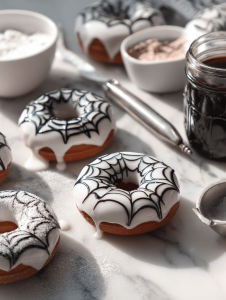
- Fill a piping bag fitted with a fine round tip with the piping sugar. Pipe delicate web patterns onto each donut, starting from the center and working outward in concentric circles, then add radiating lines to mimic a spiderweb.
- Allow the web decoration to set for a few minutes until firm. Serve the donuts fresh, showcasing their intricate web designs.
Leave a Reply